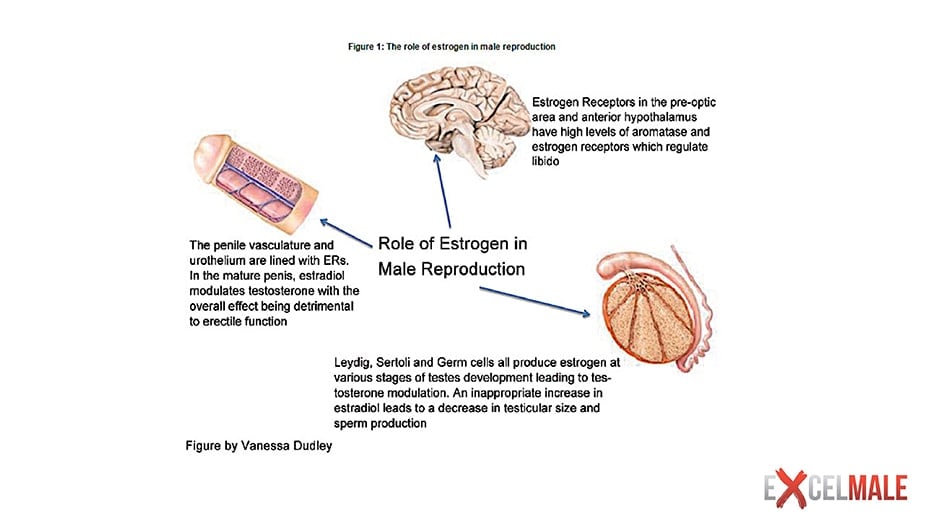Effects of High or Low Estrogen in Men

Although testosterone frequently overshadows estradiol, a hormone more commonly associated with women, estradiol plays a significant role in men's health. Derived from testosterone through a process known as aromatization, estradiol contributes to various physiological aspects in men. Although it's crucial for maintaining bone density, its role in sexual health, body composition, and other health parameters is subject to ongoing discourse. Here, we delve into the dynamics of estradiol in men, its implications, and the importance of accurate measurement.
Understanding Estradiol in Men
The hormone estradiol, although present in smaller quantities in men compared to women, is produced through the aromatization of testosterone in liver, fat, and other cells. This conversion is nature’s design, hinting at a purpose behind it. Besides promoting bone health, estradiol’s influence on men's libido, body composition, and other factors is a hot topic among researchers. Excessive levels of estradiol, especially alongside low testosterone levels, could lead to conditions like gynecomastia (enlarged breasts in men).
Hormonal Balance: The HPT Axis
The Hypothalamic-Pituitary-Testicular (HPT) axis is a hormonal cascade that adjusts testosterone production based on the levels of testosterone and estradiol in the body. When either hormone level goes up too high, the HPT axis responds by decreasing the production of testosterone to keep hormone levels in balance.
Aromatase Inhibitors: Boon or Bane?
Aromatase inhibitors (AIs) stop the production of estradiol and are often given to people who are getting testosterone replacement therapy (TRT) to help them look younger and stay healthy. While higher estradiol levels could potentially cause gynecomastia and water retention, there's speculation, albeit without scientific backing, linking high estradiol levels to erectile dysfunction. The use of AIs is thought to mitigate these issues by lowering estradiol levels. However, the exact threshold of estradiol levels in men, beyond which it could be detrimental, remains undefined.
Unveiling the Optimal Range
Recent studies have started to shed light on estradiol's optimal range. For instance, levels below 20 pg/ml have been associated with increased bone loss, higher fat mass, and diminished sexual function in men. It is very important to get a correct reading of estradiol, and it is better to use a sensitive estradiol test (LC/MS assay) instead of the more common ECLIA-based test to avoid getting wrongly high estradiol readings from things like CRP (C-reactive protein).
Estradiol’s Diverse Effects: A Closer Look
1. Bone Density:
- A study showed that estradiol levels below 11 pg/ml were linked to increased bone loss in men, emphasizing estradiol's role in bone health (Source).
2. Libido and Erectile Function:
- One groundbreaking study revealed that lower estradiol levels were correlated with increased body fat and a decrease in sexual desire and erectile function (Source).
3. Mortality Rate:
- A study highlighted that men with estradiol levels either below 21.80 pg/ml or above 30.11 pg/ml had a higher mortality rate, indicating a potential sweet spot for estradiol levels (Source).
4. Testosterone Therapy:
- In men undergoing TRT, elevated estradiol levels were associated with heightened libido, suggesting a nuanced interplay between testosterone and estradiol (Source).
Conclusion
The journey to demystify estradiol's role in men is ongoing. While its importance in bone health is well acknowledged, the hormone's broader impact on male physiology is gradually being unraveled. Accurate estradiol measurement and a deeper understanding of its optimal range could pave the way for enhanced men's health management, particularly for those undergoing testosterone replacement therapy.
Here is a more detailed discussion on estradiol in men: Click here
How to Get a sensitive estradiol test





